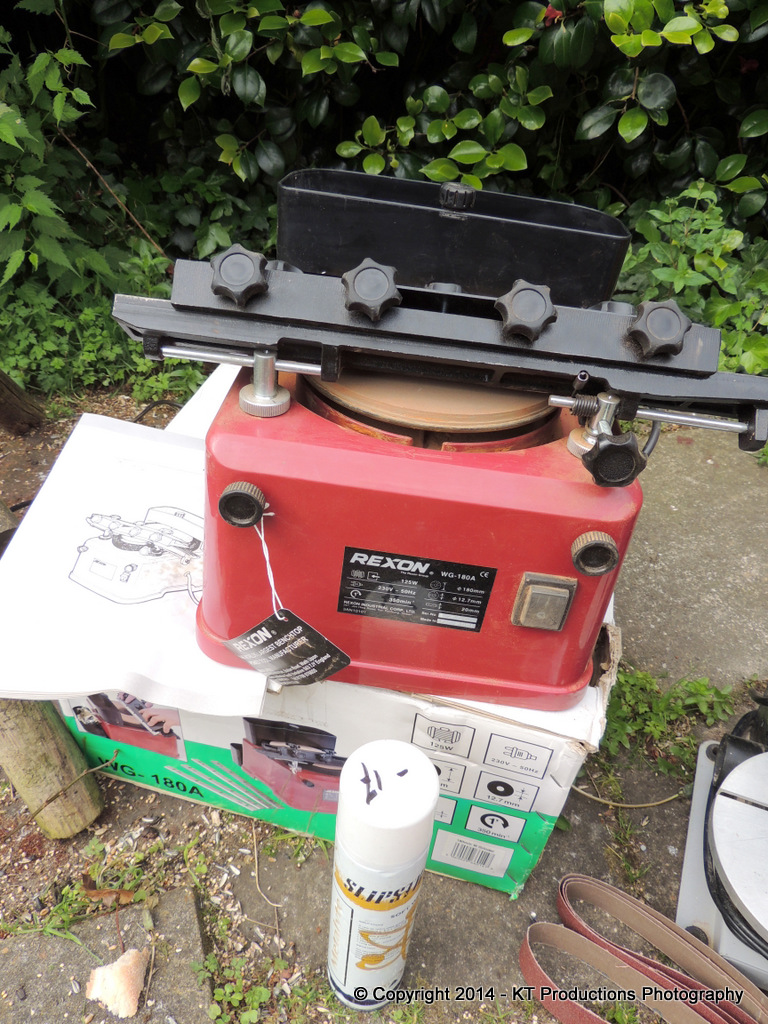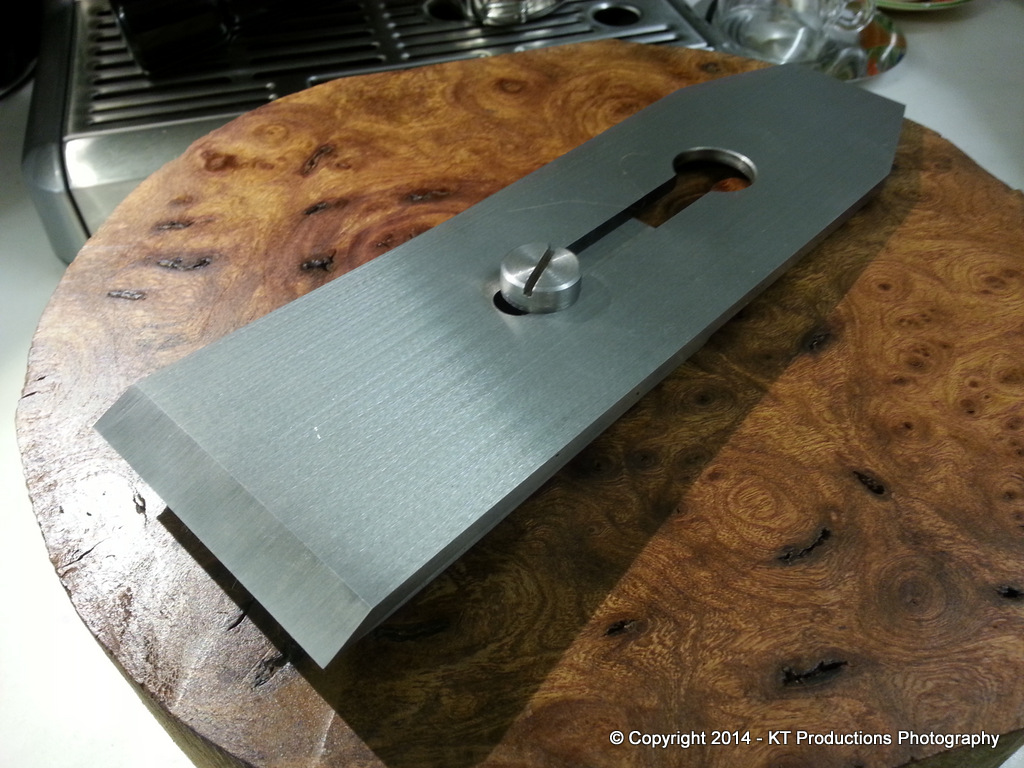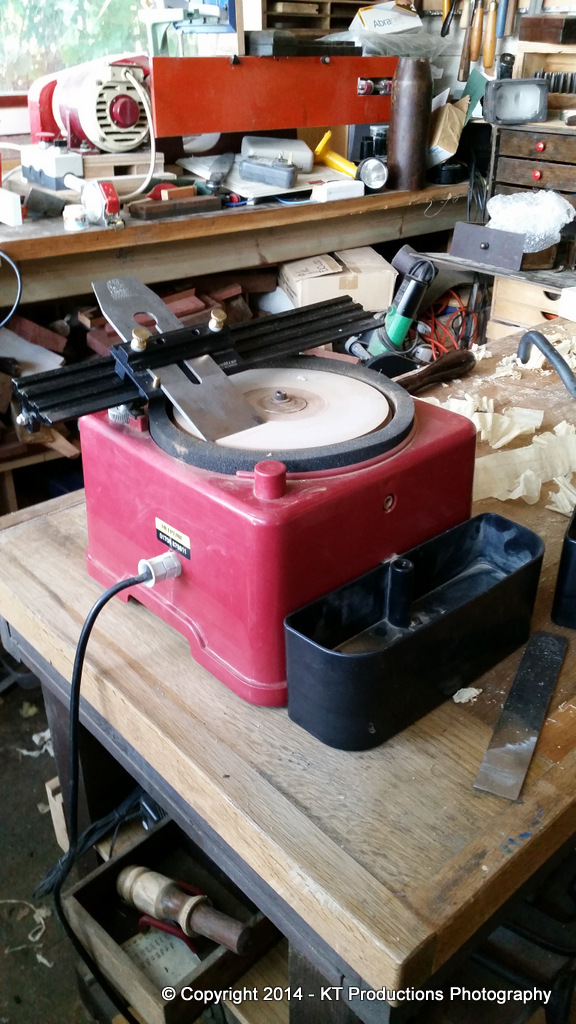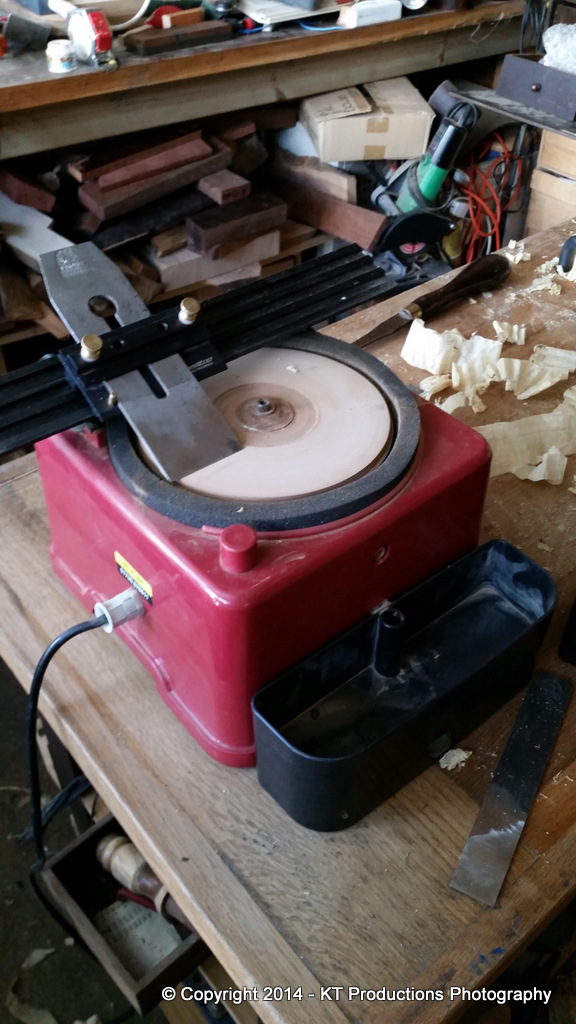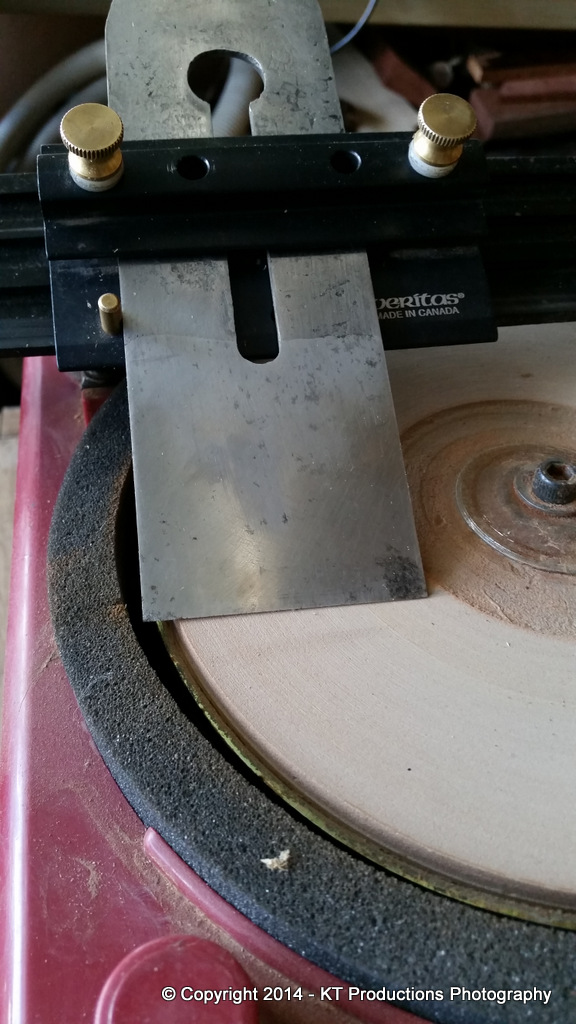Dissolve
Established Member
Hello all,
I am having a tough time re-establishing my primary bevels using a honing guide on my scary sharp set up, even with the coarsest of wet/dry and 3M films, so I'm looking into some form of power tool grinding set up.
I have a small home workshop, so space is a big factor which leads me to discuss and hopefully get some opinions on the following options;
1. Buy a bench grinder, make a jig to hold chisels and plane irons square.
2. Adapt my small belt sander much like Derek Cohen's jig/modification.
3. Buy a whetstone grinder
4. Use something else (which I'll discuss later)
I like whetstone grinders, but price is another factor, it seems to get a decent tormek(ish) set up you're looking at over £200, which at the moment is not possible so that's a "maybe one day" kind of thought.
Next up, the bench grinder. Cheap, seems you can get a 6" grinder for £30-£50 and making a jig would be relatively easy, but I have no other use for a bench grinder so the space would be my only real negative at his stage. I also like the hollow grind, my only concern would be that 6" might be too small a radius?
The belt sander, I have an Axminster belt sander which I don't use all that much, but I like the idea of adapting it into a a blade grinder, using an adjustable bar like Derek Cohen's design. Obviously I would lose the hollow grind with this, but it's a cheap option at the moment, and it's probably about the same size as a bench grinder to leave set up at all times.
Lastly, I had a strange idea to use my bobbin sander! I tried this out on an old unused chisel and was quite surprised, I squared up a block of timber, made the edges parallel, then clamped the chisel to the top edge of the block and used a 220grit sanding sleeve to slowly run the existing bevel across it.
I used the largest bobbin (around 3-4inches in diameter) and rather than pressing it straight against the bobbin I used a sweeping motion which made the hollow grind much less pronounced than a 4inch bobbin would create if I directly pressed the steel into the sander..
The results were actually quite good, but would need some fettling. The bevel ended up a slight hollow which was great but despite clamping the chisel totally square to the block, the edge ended up slightly off and slightly cambered. I checked the spindle of the sander and that was square with the table, so I guess the inconsistencies come from either the rubber bobbins being squashed by the washers load when installing, or perhaps the sandpaper sleeves are not uniform enough where the joins are?
I haven't read anything about using a bobbin sander for hollow ground bevels (probably because it's a bad idea) haha :lol: but it's something I already have and use in my workshop quite a lot, so if I could get the edges square and true I'd be happy to save the expense/space of buying a new machine.
What do you guys think? Any suggestions/advice on a cheap bench grinder set up or adapting sanders for grinding blades?
I am having a tough time re-establishing my primary bevels using a honing guide on my scary sharp set up, even with the coarsest of wet/dry and 3M films, so I'm looking into some form of power tool grinding set up.
I have a small home workshop, so space is a big factor which leads me to discuss and hopefully get some opinions on the following options;
1. Buy a bench grinder, make a jig to hold chisels and plane irons square.
2. Adapt my small belt sander much like Derek Cohen's jig/modification.
3. Buy a whetstone grinder
4. Use something else (which I'll discuss later)
I like whetstone grinders, but price is another factor, it seems to get a decent tormek(ish) set up you're looking at over £200, which at the moment is not possible so that's a "maybe one day" kind of thought.
Next up, the bench grinder. Cheap, seems you can get a 6" grinder for £30-£50 and making a jig would be relatively easy, but I have no other use for a bench grinder so the space would be my only real negative at his stage. I also like the hollow grind, my only concern would be that 6" might be too small a radius?
The belt sander, I have an Axminster belt sander which I don't use all that much, but I like the idea of adapting it into a a blade grinder, using an adjustable bar like Derek Cohen's design. Obviously I would lose the hollow grind with this, but it's a cheap option at the moment, and it's probably about the same size as a bench grinder to leave set up at all times.
Lastly, I had a strange idea to use my bobbin sander! I tried this out on an old unused chisel and was quite surprised, I squared up a block of timber, made the edges parallel, then clamped the chisel to the top edge of the block and used a 220grit sanding sleeve to slowly run the existing bevel across it.
I used the largest bobbin (around 3-4inches in diameter) and rather than pressing it straight against the bobbin I used a sweeping motion which made the hollow grind much less pronounced than a 4inch bobbin would create if I directly pressed the steel into the sander..
The results were actually quite good, but would need some fettling. The bevel ended up a slight hollow which was great but despite clamping the chisel totally square to the block, the edge ended up slightly off and slightly cambered. I checked the spindle of the sander and that was square with the table, so I guess the inconsistencies come from either the rubber bobbins being squashed by the washers load when installing, or perhaps the sandpaper sleeves are not uniform enough where the joins are?
I haven't read anything about using a bobbin sander for hollow ground bevels (probably because it's a bad idea) haha :lol: but it's something I already have and use in my workshop quite a lot, so if I could get the edges square and true I'd be happy to save the expense/space of buying a new machine.
What do you guys think? Any suggestions/advice on a cheap bench grinder set up or adapting sanders for grinding blades?






